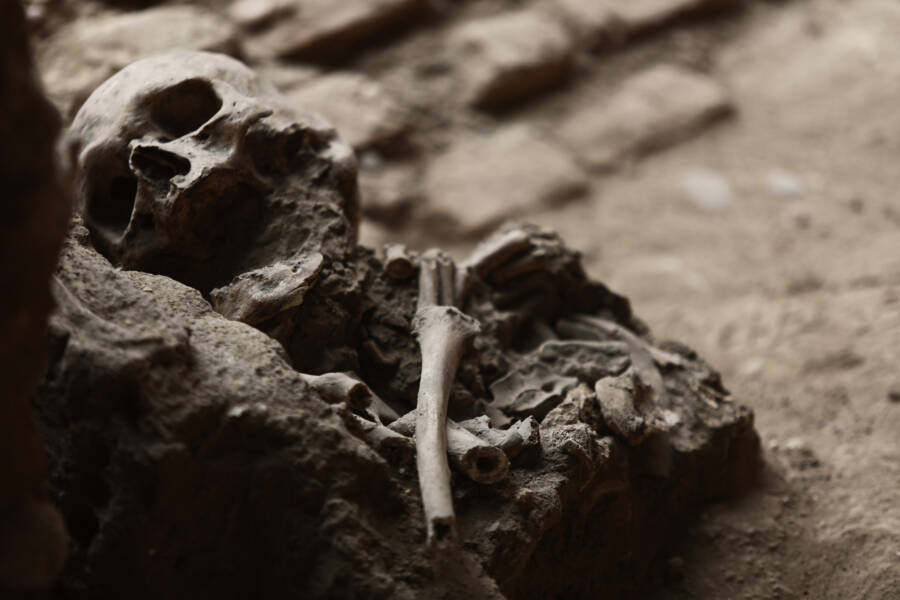Bronze Age sunken city emerges from the Tigris River, ancient paintings found beneath layers of bird poop in Egypt, dozens of Spanish colonists' skeletons uncovered in Peru.
3,400-Year-Old Sunken City Of The Mysterious Mitanni Empire Emerges From The Tigris River

University of FreiburgThis lost settlement is believed to be the fabled city of Zakhiku, a bustling seat of power within the mysterious Mitanni Empire that controlled vast swaths of Mesopotamia between 1550 and 1350 B.C.E. before vanishing forever.
Due to climate change that’s caused extreme drought across Iraq, the Mosul Dam along the Tigris River has dwindled to historic lows — revealing a sunken city that was lost 3,400 years ago. The city suddenly emerged from the Tigris in December 2021, leaving archaeologists in a frantic race against the clock as they had mere weeks to excavate and map the entire thing before it disappeared into the river once again. Believed to be the Mitanni Empire’s storied city of Zakhiku, this vast settlement includes a fort with towers, an industrial complex, and a palace.
Learn the full story behind this sunken city lost since the Bronze Age here.
Temple Restoration Project In Egypt Reveals Dozens Of Colorful Carvings Beneath Centuries Of Bird Poop

Egyptian Ministry of Tourism and AntiquitiesOne of the colorful frescoes revealed by the restoration project.
For centuries, dirt, soot, and bird poop accumulated on the walls of the Temple of Khnum at Esna. But now, a team of German and Egyptian archaeologists is working to painstakingly clean the site, exposing the stunning and vibrant frescoes of goddesses that long lay beneath.
Dig deeper in this report.
Archaeologists Unearth 42 Skeletons Of Syphilis-Ridden Spanish Colonists Under Peru’s Oldest Hospital

Klebher Vasquez/Anadolu Agency/Getty ImagesThe remains showed signs of syphilis and bore skull deformities.
The Hospital Real de San Andrés in Lima, Peru, has long captivated historians. Built exclusively for Spanish patients in 1552, legend holds that it served as a tomb for the last three rulers of the Incan Empire. While those have yet to be found, archaeologists just unearthed the skeletons of 42 Spanish syphilis victims.
The bodies were found in the courtyard of the historic hospital building. While it was identified as a burial ground two decades ago and the remains were only buried 12 inches deep, only renewed archaeological digs beginning in 2021 led to their discovery — and an underground crypt nearby.
Read on here.





